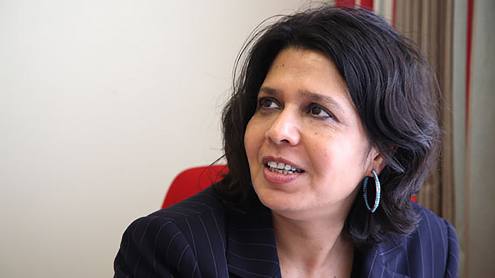An inventive new structure has enlivened the whole business securitisation (WBS) market, with a £1.02bn ($1.62bn) multi-tranche transaction from UK leisure company Center Parcs. The architect of the deal, which was the first in Europe to include a high yield element, was Royal Bank of Scotland.
While WBS has had its problems in the US, it has found a natural home in the UK, where the law is more accommodating to its creditors’ claims. Nonetheless, Center Parcs, whose four UK forest villages cater for short break holidays, is an unusual candidate. The structure is more often associated with utility and infrastructure businesses, where cash flows are robust and predictable.
Editor's choice
Past transactions have been executed for airports and ports, rolling stock leasing companies, water companies and, with mixed success, pub companies. Center Parcs, however, can point to robust and predictable cash flows of its own.
“It is a unique business,” says James Miller, head of secured debt markets at RBS. “With a 20-year solid track record of increasing Ebitda [earnings before interest, taxes, depreciation and amortisation], it is almost utility-like.”
Its holiday villages in Cumbria, Nottinghamshire, Suffolk and Wiltshire have an impressive 95% occupancy rate with minimal discounting. Financial sponsor Blackstone bought the business in 2006. Having refinanced its original loan in the commercial mortgage-backed security (CMBS) market, in the days when securitisations flew off the shelves, it had debt of some £1.25bn maturing in September 2013.
New structure needed
On the face of it, Blackstone was not yet under pressure to refinance. However, it wanted to press on with the next stage of Center Parcs’ growth, which involves the development of a fifth forest village at Woburn, Bedfordshire. So in reality it needed to refinance its existing debt before it could proceed. Its options were relatively limited, given that European property lenders are dwindling in number, the CMBS market has been muted and leisure companies and hotels are seen as riskier than shops and offices.
“We understood that Blackstone was considering the high-yield market, but when we examined this the cost was quite prohibitive,” says Mr Miller. “So we looked at a new structure which, for the first time, combined a WBS and a high yield, and ultimately delivered a much more attractive financing.”
The structure RBS had in mind was unproven in the market, and other bankers said it was not executable, but Blackstone told the team to go ahead and they began working on the transaction in early 2011. While appraising Center Parcs itself, the team also had to take into account the nature of Blackstone’s own business.
“These structures are normally used by more long-term owners, not by sponsors,” says Mr Miller. “But a financial sponsor needs an exit, and so the structure had to be highly flexible.” Flexibility and leverage were the watchwords.
The deal had three tranches, with two securitised class A notes and a high-yield class B note. All share the same ultimate security, though under separate terms and conditions governed by an intercreditor agreement. While WBS is typically secured on the holding company, in this case it was secured on the operating business, to improve the credit quality and hence the ratings – BBB/BBB for the investment grade tranches and BB+/B+ for the high-yield tranche (from Standard & Poor’s and Fitch, respectively).
Strong security
Unlike normal WBS, the notes are not amortising but pay interest only, with extreme penalties if investors are not repaid by the expected maturity date. The class B notes have regular high-yield covenants and, while subordinated to the class As, enjoy an exclusive share pledge giving investors control of the top company in the Center Parcs structure if they are not repaid.
While the legal maturity of all three notes is 30 years, the expected maturities – like a hybrid security – are five and 12 years for the class A notes and six years for the class B. The result is that if Blackstone chose to float the business in four or five years’ time, the break costs would not be too expensive.
“It could repay the high yield and the five-year, leaving the 12-year in place,” says Mr Miller. That would bring the leverage down from its post-transaction level of 7.6 times to 3 or 3.5 times, which is more suitable for an initial public offering.
A feature of the deal was the extent to which RBS worked with key investors to make sure it was creating something that would sell. “You have to be flexible throughout the process, to make sure that your ideas equate to a marketable proposition,” says Neil Arrowsmith of the investment grade corporate syndicate at RBS. “We started by approaching the top three or four UK sterling buyers and then broadened the net.”
In all, RBS approached a dozen or so accounts, about half of whom agreed to ‘wall-cross’, signing confidentiality agreements and agreeing not to trade on the basis of privileged information. “They gave us the confidence that we had a structure that worked,” says Mr Arrowsmith. “Then it was just a matter of waiting for a window.”
Narrow window
That window would be a long time in coming. By now it was the summer holiday season 2011, and it would be 2012 before market conditions were anything like acceptable. Even then, the Greek crisis was still boiling away, but a decision was taken to announce the deal in the second week of February, in the knowledge that the marketing process would take two weeks.
Barclays Capital, HSBC and Lloyds Bank Corporate Markets came aboard as co-lead managers. All four banks are also lenders to Center Parcs’ fifth forest village project, which will come inside the WBS ringfence only after completion in 2014.
Center Parcs was looking to raise £740m through the A notes and another £280m via the high-yield issue. While it did not need to take any more than that, it could not afford to take less. “The concern we had was the quantum of the deal,” says Mr Arrowsmith, adding “£740m is big for a BBB.”
The deal’s managers had taken the precaution of securing some anchor orders before announcing. “Then pretty much every sterling investor wanted to look at it,” Mr Arrowsmith continues. “It was an unusual proposition, and people loved the business. There was a packed schedule on the roadshow.”
As the roadshow continued, noises from Greece and the eurozone raised the fear that markets would return to the pre-Christmas freeze, and the process was accelerated. “We were not sure we would have a market by Monday [when the deal was due to price], so we decided to price on Friday,” Mr Arrowsmith says. “We knew we needed everyone in, so we pushed the accounts pretty hard.”
An acquired taste
Given the sterling investor taste for long bonds, the team was pleasantly surprised at how many of them liked the five-year from a credit perspective. Buyers for the 12-year, on the other hand, were looking for a margin uplift to compensate for the duration. The spread differential was adjusted and £30m moved from the 12-year to the five-year. The result was £300m in five-year notes with a coupon of 4.811%, and £440m in 12-year paper paying 7.239%. Both were twice oversubscribed and the pricing was tightened by 10 basis points in each.
Comparables for the A notes, such as they were, included BAA and Gatwick even though these were more tightly priced. Comparables for the high-yield issue, the year’s first in sterling, were even harder to find.
“This is a leisure business but with infrastructure characteristics,” says Kevin Connell, RBS managing director, high-yield syndicate. “There were no direct comparables. We did, however, use the BAA and water utility holdco deals as a starting point before looking at [UK care home group] The Priory’s unsecured notes.” The B note coupon was set at 11.625%.
All three notes have since traded up and the markets clearly liked the transaction. Will there be more?
“This was a very specific deal and the types of companies it would suit are limited,” says Mr Miller. “Healthcare is definitely a possibility, though there is not a ton of business there. But where it can work, it is extremely powerful and delivers a lot of value.”












